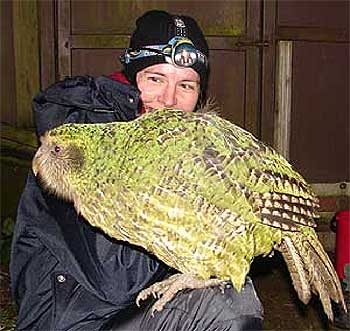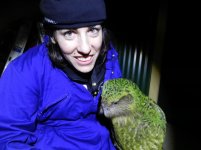apatrimo94
New member
Hey, I'm not sure if many of you have heard of them, but there's another parrot native to New Zealand called the Kakapo. The Kakapo is known as the owl parrot since it is nocturnal (awake during the night). It's also the heaviest of all parrots. It's the only parrot that CANNOT fly, and they live up to 60 years. They also have a very intresting way of mating and breeding. These guys are HUGE parrots, check out their size compared to a normal human being:

I bet those would make great birds for really good and experienced owners. However, the sad thing is, they're critically endangered with only about 120 left in the wild, with a few in captivity. Why? Because of us, of course :headwall:. There are recovery and conservation programs to help bring the population back up. These guys have done well! Their poplation has gone up from "extinct in the wild" to 120 since 1990. They are gorgeous parrots.




Hopefully they stay around longer. Here's the official website: http://www.kakaporecovery.org.nz/ I donated $10 to help with their recovery programs. Hope you enjoy the pictures.

I bet those would make great birds for really good and experienced owners. However, the sad thing is, they're critically endangered with only about 120 left in the wild, with a few in captivity. Why? Because of us, of course :headwall:. There are recovery and conservation programs to help bring the population back up. These guys have done well! Their poplation has gone up from "extinct in the wild" to 120 since 1990. They are gorgeous parrots.




Hopefully they stay around longer. Here's the official website: http://www.kakaporecovery.org.nz/ I donated $10 to help with their recovery programs. Hope you enjoy the pictures.
Last edited:

